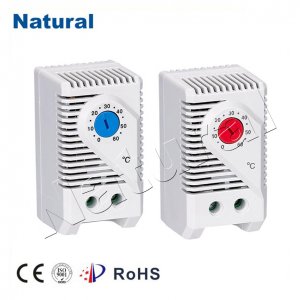In our modern world, where convenience and energy efficiency have become paramount concerns, the regulable thermostat stands as a technological marvel. This unassuming device, often overlooked in our homes and offices, plays a crucial role in maintaining a comfortable indoor environment while simultaneously reducing energy consumption. In this article, we will explore the regulable thermostat’s functions, benefits, and its role in creating a greener future.

The Basics of Regulable Thermostats At its core, a regulable thermostat is a device used to control the temperature of a heating or cooling system within a space. It does this by monitoring the current temperature and comparing it to the desired setpoint temperature. When the actual temperature deviates from the setpoint, the thermostat activates the heating or cooling system until the desired temperature is achieved. Once the setpoint is reached, the thermostat turns off the system to maintain the temperature within a narrow range. Enhancing Comfort and Efficiency Precision Control: Regulable thermostats offer precise temperature control, allowing occupants to tailor their indoor climate to their specific preferences. This ensures year-round comfort, regardless of external weather conditions. Energy Savings: One of the most significant advantages of regulable thermostats is their ability to reduce energy consumption. By maintaining a constant temperature when needed and adjusting it when not, they prevent unnecessary heating or cooling, ultimately leading to lower energy bills and a reduced carbon footprint. Adaptive Learning: Some advanced regulable thermostats are equipped with adaptive learning capabilities. They learn from your temperature preferences and daily routines, optimizing heating and cooling schedules to further enhance energy efficiency and comfort. Remote Access: Many regulable thermostats can be controlled remotely via smartphone apps or web interfaces. This feature allows you to adjust your home’s temperature settings even when you’re away, ensuring that you return to a comfortable environment without wasting energy. Types of Regulable Thermostats Manual Thermostats: These are the most basic regulable thermostats, requiring manual adjustment of the setpoint temperature. While simple, they lack the energy-saving features of more advanced models. Programmable Thermostats: Programmable thermostats allow users to create schedules for heating and cooling. This lets you automatically lower the temperature when you’re not at home or while you’re asleep, optimizing energy use. Smart Thermostats: Smart thermostats take things a step further by offering Wi-Fi connectivity and smartphone integration. They can be controlled remotely and often include learning algorithms to adapt to your habits. A Sustainable Future with Regulable Thermostats As our society becomes increasingly conscious of the environmental impact of energy consumption, regulable thermostats play a pivotal role in reducing our carbon footprint. By optimizing heating and cooling systems, they help mitigate greenhouse gas emissions, making them an essential component of green building designs and sustainable living. Conclusion The regulable thermostat may not grab headlines or attention like the latest gadgets, but its importance in our daily lives cannot be overstated. From enhancing our comfort to reducing our energy consumption and contributing to a more sustainable future, regulable thermostats silently play a crucial role. As technology continues to advance, these devices will only become more intelligent and energy-efficient, ensuring that our indoor environments remain both comfortable and environmentally responsible.